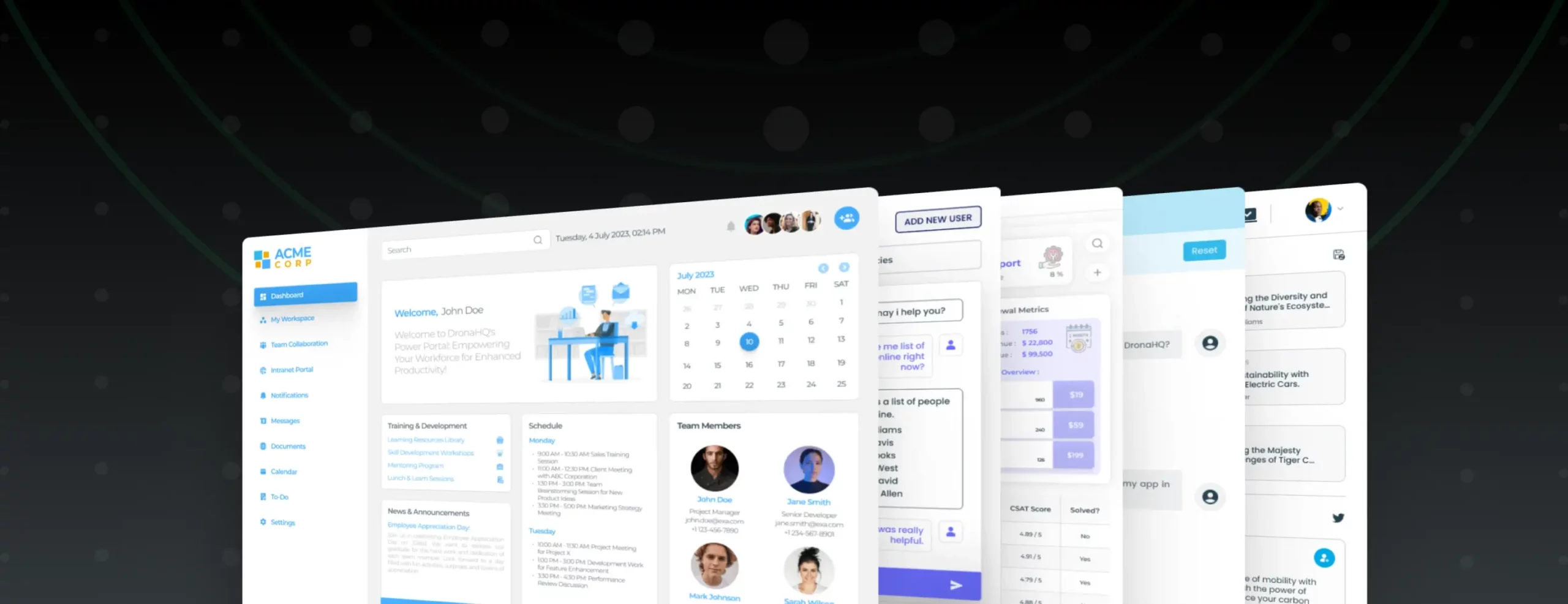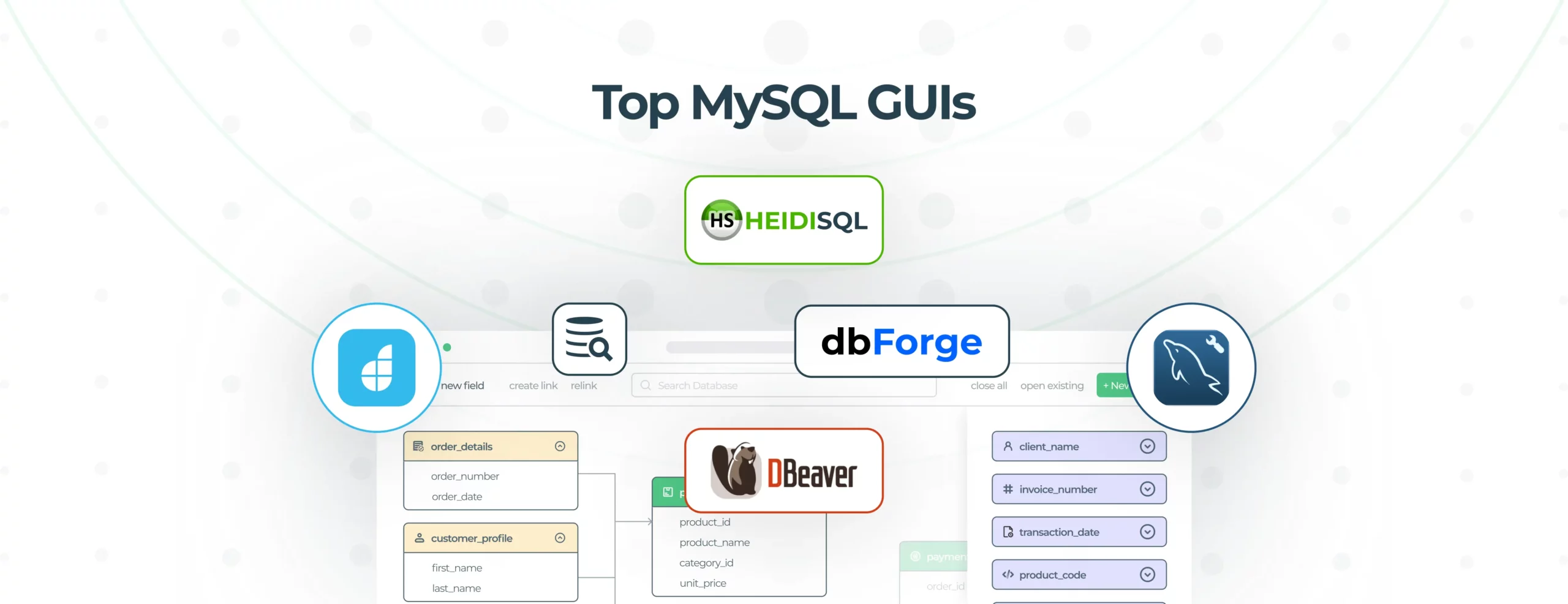

What is Citizen Development? A 2023 Guide
Citizen development have equal amounts of fanfare and critics. On the one hand, it’s clear that citizen development has market traction: Gartner predicts that by 2023, the number of active citizen developers at large enterprises will be at least four times the number of professional developers.
On the other hand, there is still skepticism, that while citizen development is being provisioned by mature tools, a lot of what gets built initially is not adopted by end users.
In this blog we offer our take on citizen development. We answer questions like:
- What is citizen development?
- Who are citizen developers?
- Why is there a need for citizen development?
- How is citizen development fundamental to digital transformation?
- The advantages and disadvantages of citizen development
What is citizen development?
Citizen development facilitates semi-technical employees to become software developers and create business tools and applications. This citizen development movement is enabled by the explosive growth and maturity of no code and low code development platforms such as DronaHQ, Retool, Internal, Bubble, Appsmith, UI Bakery, Appsheet, and Power Platform. These platforms empower non-technical users to build applications as quickly as ideas emerge, and when integrated with advanced data analytics, their benefits can be multiplied.
Using IT-sanctioned low code, no code platforms or data management or analytics tools, a citizen development team creates and customizes existing applications to suit the business’s requirements and improve operational efficiency within the company.
The practice of citizen development aims to scale business-led development and deployment of digital solutions that have an impact across the business. As more organizations continue to adopt the practice of citizen development is expanding further to citizen application integration, citizen data science, and more.
In the below video, for instance, our citizen development advocate, Aakash, creates an internal tool app for managing sales inventory stored in Airtable: How to create a custom Airtable frontend in 10 minutes!
What is Citizen Automation?
Traditionally data integration has been an exclusive task of IT specialists to connect applications and integrate data between systems to automate processes and create a smooth flow of information.
To meet the coming wave of hyper-automation, organizations need to do a better job of partnering with professionals outside of IT to automate business processes and data integration, according to research firm Gartner.
However, now we are entering a new era of data integration and process automation where business users are able to accomplish the same tasks with greater ease and efficiency using automation tools that do not require extensive scripting.
Technology leaders are reimagining the process automation approach by utilizing existing resources and empowering the business users and subject matter experts within their organization to quickly build data connections and speed up processes such as approval workflows, new user onboarding, order fulfillment, data synchronization, etc. thus encouraging innovation and faster ROI generation.
Who are citizen developers?
This a user who creates business applications, data solutions, or automations, who may have some level of formal software development training but have not worked or been trained extensively. They create software packaged for enterprise businesses using no code or low code platforms.
Successful developers tend to understand processes and data, think logically, and are motivated to learn new technologies to create business solutions.
A Gartner report observes that citizen developers will build nearly 25% of business applications in an enterprise. This advantage will free up engineering resources to focus on deeper IT concerns. Organizations without citizen development capabilities will face dilemmas in responding to changing market forces and customer preferences.
The need for citizen development
A survey by Dimensional Research reports that 77% of tech leaders and 71% of business leaders say their IT teams have a pipeline of new tech solution requests that aren’t being built due to reasons such as the lack of qualified specialists and costs.
This is one area where existing resources must be deployed to maintain and modernize the existing IT infrastructure.
Citizen development is fundamental to digital transformation
There are two key sources that are increasingly demanding digital interactions: customers and employees.
- Customers are increasingly getting accustomed to seamless mobile/website real-time experiences. Forrester projects online retail sales in the U.S. alone will top $712 billion by next year, and 98 percent of American adults are online at least once a day.
- Employees, on the other hand, use technology every day to make their work smarter and their lives easier — right from capturing data to an online database that displays it right on a dashboard to ordering lunch online in a matter of minutes! So, naturally they expect to complete routine tasks like assembling a simple sales lead interaction update as quickly as they can buy a place order for their meals.
The DIY culture is not lost on the employees. When employees feel they cannot manage their work lives as smoothly as they would like, they take matters into their own hands by creating macros, using online forms and more to make their daily work easier, often without guidance (governance) of IT.
While for some occasions these efforts have worked well, in others these have led IT teams to put out fires resulting from ‘Shadow IT’.
Now, however, modern citizen development platforms allow business developers to work in collaboration with the IT to safely produce business applications. With an effective citizen development program in place, organizations get happier employees and more efficient operations by allowing IT to focus on more critical needs.
What’s Powering Citizen Development?
New age solutions like Low code and no code platforms, online databases, and automation solutions are a game changer for the citizen development community. These tools help to easily adapt to new requirements and changing demands of the market faster than ever before.
These user-friendly tools include drag-and-drop design, Excel-like interfaces and application templates that define forms, logic, data and integration, allow easy deployment and devops, give powerful options to define and manage users and permissions.
Best Citizen Development Use Cases
Routine business processes, that are repetitive and rule-based, are the most popular use cases for citizen development. These can be further categorized into following categories:
- Database GUIs – Frontend applications like dashboards, admin panels, clients to easily interact with information in the database. Visual app development tools helpbusiness users easily design front end applications and connect to data sources using ready connectors to databases like mongoDB, MS SQL, PostgreSQL, Firebase.
- Task Automation – Point and click interfaces designed to simplify app integration and task automation allows citizen development teams to optimize (HR, IT, Customer Services, Marketing, Sales) tasks like: notifications, reminders, approvals, assignment.
- Process Automation – More intricate, end-to-end process automation like connecting multiple systems or data sets that may include some human interaction. For example, developers can improve business processes and workflows within apps or provide better or cohesive user interfaces for existing apps.
No matter the use case, a well-thought-out and implemented citizen development project will speed processes and free up IT resources. At the same time, it will increase speed and accuracy while decreasing dependence on e-mail and files. They also make it easier to deploy, host and maintain the applications, thus supporting complete life cycle of apps.
Citizen development pros and cons
PROS
- Enable Business Agility Business is changing faster than the technology and resources available to support it. Business teams need to be ready to adapt and evolve their work and data flows to rapidly respond to disruption and new opportunities.
- Accelerate Continuous Improvement Even when committed to continuous improvement, businesses can lack the visibility or means to adapt their processes quickly. Tapping into the expertise within the people closest to the business will lead to more rapid innovation.
- Strengthen the IT and Business Partnership IT organizations, often under-resourced, need a safe approach to enable business professionals to build, iterate, and integrate applications. IT can focus on high-value activities and reduce their backlog by unlocking faster innovation across the business.
- Proactively Manage Risk through Governance Businesses can struggle to keep up with ongoing compliance against constantly evolving controls, standards, and regulations. With strong, IT-led governance and compliance guardrails, organizations will have peace of mind that processes follow compliance policies and practices.
CONS
- Constantly changing technology With constant updates to applications and programs, consistent training and retraining of business users is needed to keep pace with these revisions. Most of them, especially those new to this business process, require guidance in becoming software developers.
- Shadow IT IT teams are concerned that business users will adopt SaaS tools and begin designing apps without the preliminary usage permissions and security guidelines in place.
- Technical Debt When focus shifts over from quality to speed, the results can be applications that are not full-features, or miss out on key capabilities, poor quality, or the solutions built and launched fail to scale. Such outcome or debt eventually has to be paid with time, money, and development resources.
Challenges of Low Code and No Code Citizen Development
Every challenge low-code and no-code platforms present not only has a solution, but each solution strengthens the benefits the platforms deliver.
For example, better defining the boundaries between IT and the business will improve all your development efforts, whether related to citizen development or not. As you further enable in house developers and drive adoption, development lifecycles will continue to tighten and productivity will continue to rise. Meanwhile, as business users encounter and solve inefficiencies or poor designs, they will become even more autonomous and satisfied with their work.
Citizen development challenges can be solved by:
- Selecting the right use cases
- Identifying the best potential developers
- Identifying the right platform
- Implementing a Center of Excellence (CoE) approach to establish a framework for success
Citizen Development and Operational Agility
By scaling citizen development across your organization more of your people become engaged with development and innovation. Not only does this empower your people to turn ideas into solutions faster, it also empowers them to achieve operational agility by turning adaptability and flexibility into a competitive advantage.
Enable Citizen Development Safely and Sustainably
With a governance practice that safely and securely enables it, citizen development strengthens the relationship between IT and the business. The business creates digital solutions to solve everyday workflow challenges, while IT retains full control over security and compliance to their policies and practices. A secure and flexible governance model keeps your data safeguarded and maintains development best practices across your organization.
Summing up
Citizen development is a disruptive solution to address the gap in tech expertise that exists today, and it offers a great way to foster a culture of innovation. Low code platforms like DronaHQ are helping teams implement a successful program that enables the development of truly powerful enterprise apps. In order to drive real business results, organizations need to also invest time in enablement, develop a culture of component reusability and have a strategy to measure the productivity and business impact of their apps. Arming business users with low code can help shift back focus to solving hard pressing business problems.



